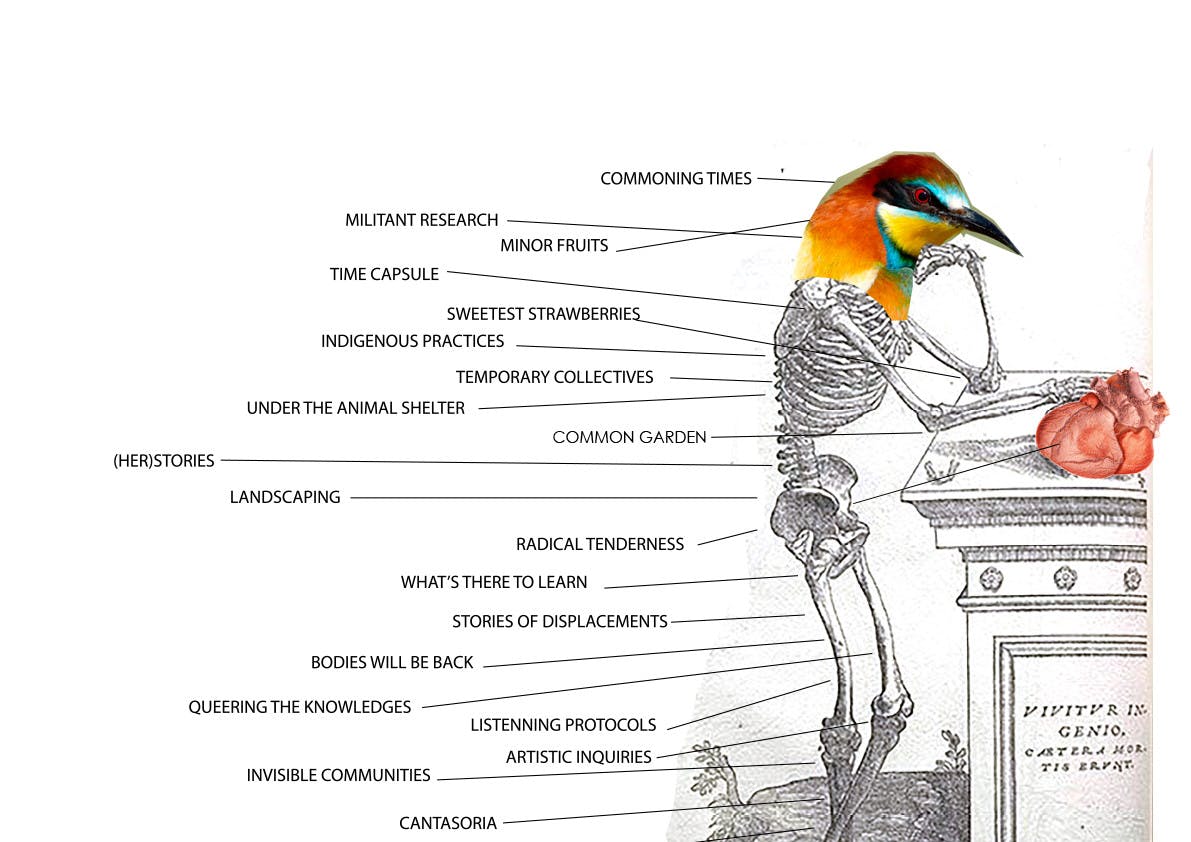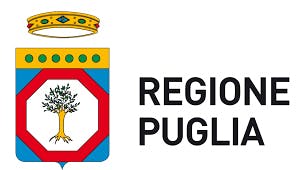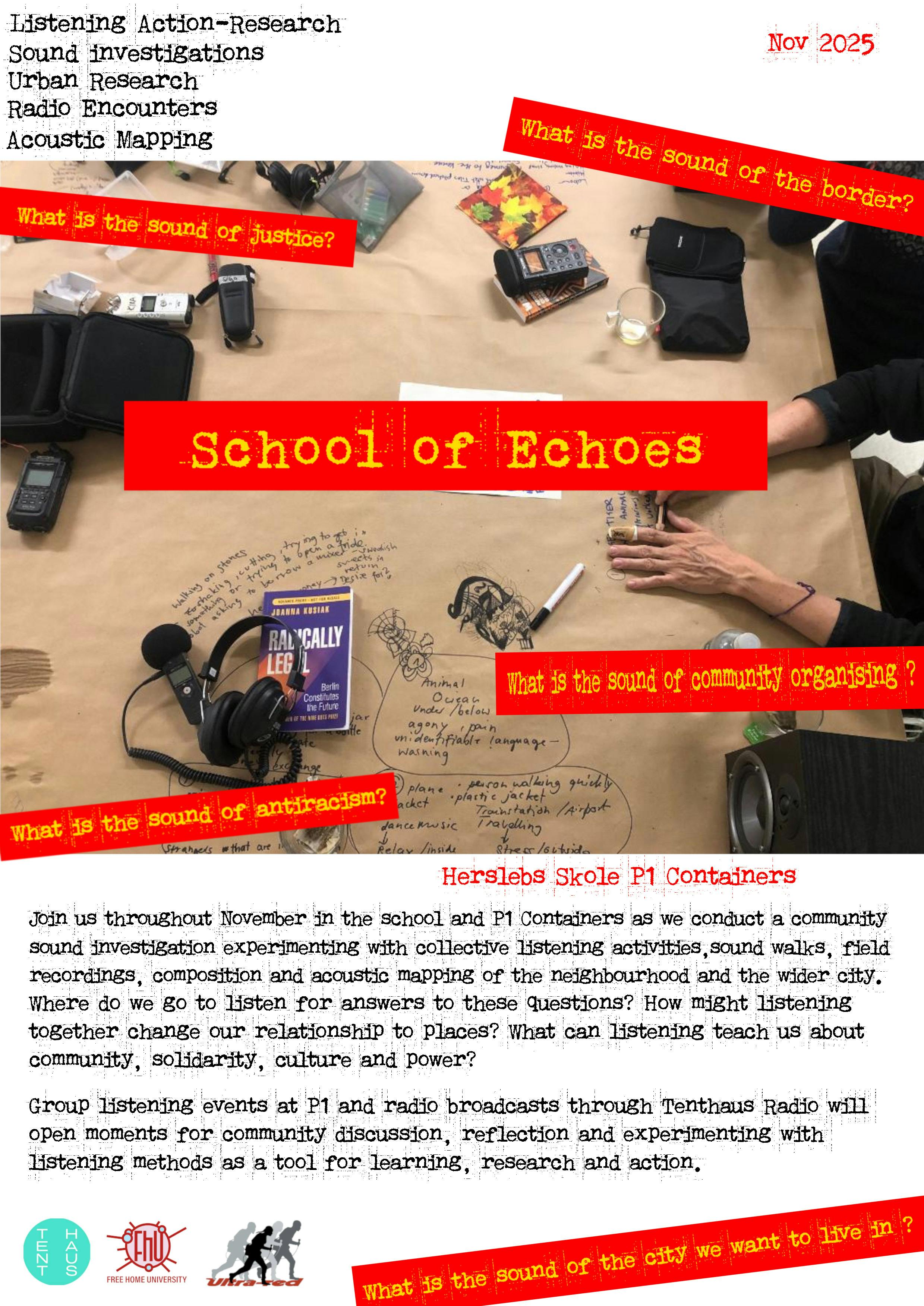Making Films Zapatistically || essay by Tsaplya Olga Egorova
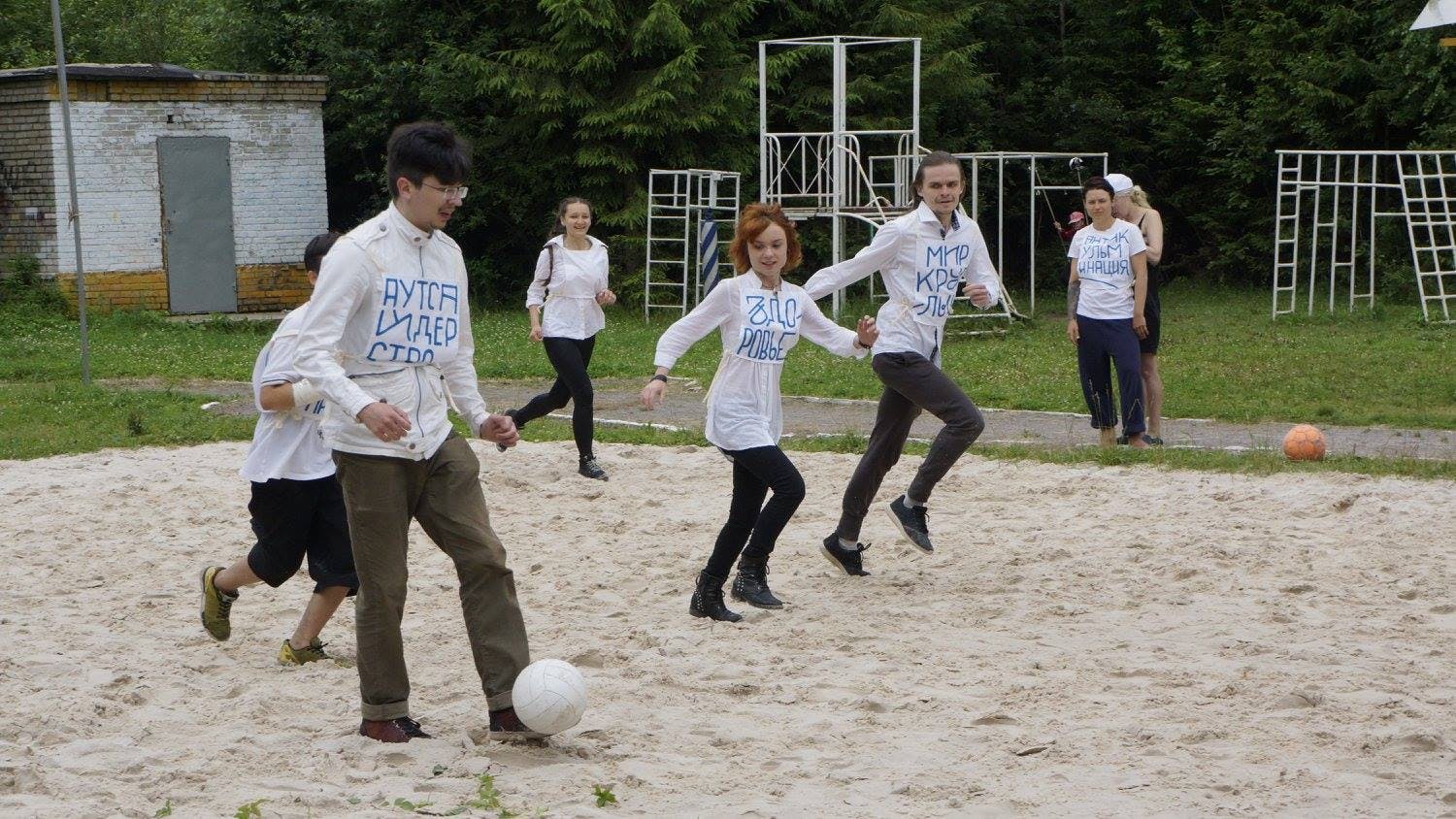
Making Films Zapatistically*
Some remarks on the films The New Dead End #17: Summer School of Slow Orientation in Zapatismo and People of Flour, Salt, and Water
by Tsaplya Olga Egorova
Introduction
Two films have a special place in the work of our group; we came up with a method in the process of creating them, which now goes by the name of the Zapatista method. In following remarks I want to reflect on what this method consists of, and why this method is so important to us.
Our main source is the book by Subcomandante Marcos [1], had a decisive influence on us. However, we only began working on creating a Zapatista method in 2017, after our journey to the state of Chiapas in Mexico, the birthplace of the Zapatista movement, where we discovered Zapatismo, not only as political literature and theory, but also as a reality transformed by poetic imagination.
Returning to St. Petersburg we decided to reread Marcos’ book together with the participants of our School of Engaged Art. It was important for us to understand whether our comrades—young artists and intellectuals— were also interested in the ideas of the Zapatistas.
We read the small book by Marcos over the course of six months, attentively stopping at each significant point and analyzing all the poetic metaphors in order to find the basic principles, mainsprings, and mechanisms of the Zapatista movement. After that, we all moved in together for two weeks to a dacha in the village of Siverskaya, where we tried to put into practice these principles that we discovered, channeling those metaphors born in Chiapas into the reality of the Russian countryside.
Later, on the basis of these practices, we created our first Zapatista film The New Dead End #17: Summer School of Slow Orientation in Zapatismo.
We made our second Zapatista film, People of Flour, Salt, and Water [2] in the summer of 2019 together with our comrades from Free Home University who brought us to the village of Castiglione in the South of Italy. In this village there is an activist cooperative/cultural organization of farmers and land protectors called Casa delle Agriculture. In the House of AgriCultures the group is practicing ways of commoning, ways of collectively inhabiting ownership, which disrupt private property. In the everyday practices of this cooperative, in how the members relate to the land, their culture, and collectivity, we found many traits that we can call zapatistic, and so working together with them and in their context was extremely important for the further development of our method. In addition, we invited a group of migrants—our comrades who had been forced to flee their homes in Africa and Kurdistan—to participate in the film. While working on the film we had no opportunity to study Marcos’ book in detail, but we were visited by Christian Peverieri, a Venetian activist and a member of an Italian social movement influenced by Zapatismo, who shared with us his firsthand experience in Chiapas.
These two films are of course different, but they share general semantic and formative aspects, which we will discuss below.
Some Considerations About the Need and Possibility of Creating Our Own Zapatistic Method:
Paraphrasing Godard’s invitation to make films politically, making a film zapatistically does not mean making a film about the Zapatista movement, but instead, it means making a film that arises from the Zapatista methods.
Why does one need to learn from Zapatismo? Because the world we were used to is changing and the old ways of engaging in political struggle no longer work. We are faced with the need to search for new paths.
Perhaps they start in Chiapas.
The Caracoles [3], the autonomously governed villages of the Zapatistas, are full of art. They are mainly filled with wall paintings/political posters on the sides of houses.
These murals, made both by the Zapatistas themselves and by invited artists, transform the space of daily life, enriching every minute and every inch with meaning. Sometimes the Zapatistas create rituals that we might call performances. From time to time, they conduct international festivals dedicated to the innovations of science, women’s struggles, music, and art. However, although we admire the art in the caracoles, we mean something else when we use the term Zapatista art. We do not want to copy Zapatista culture—it does not belong to us. Instead, we want to learn the spirit of Zapatismo, which belongs to all. How can we, people from Russia, learn Zapatismo and, moreover, try to create our own principles of art production, that is, certain guidelines for action based on the real-life practice inspired by a group of people living on the other side of the globe? Does this make sense?
Do we have a right to do this?
The Zapatistas say: You don’t need to go to Chiapas to be a Zapatista. You should stay in your own place and change the situation around you instead.
We are artists. Our responsibility is art. This is the territory we can change. This is where we develop our own Zapatista principles.
Our Zapatista principles have no direct relation to the Zapatista demands [4]. They were created by us on the basis of our own reflections. We do not exclude the possibility that the Zapatistas themselves might take issue or disagree with our points.
Let us now dwell in more detail on the principles we have drawn up, and show how they are embodied in our Zapatista films.
1/ Equality
—the most important underlying principle of the Zapatistas. In the Zapatista community, everyone is equal: women and men, guerrilla fighters and civilians, military commanders and children. This type of equality requires daily work, otherwise it can easily degrade into hierarchy.
It is not the case that the Zapatistas simply preach equality; they practice it. This principle is at the heart of our film work. It should be noted that it was quite easy and natural for us to practice equality with the students of our School; despite the difference in our experience and social status, our relations emerged through the commonality of our interests and ideals. Moreover, it is a long process that has its ups and downs. Shooting our “Italian” film required a different degree of engagement in practicing equality. There, our collective was made up of people who had met for the first time. Some of us had nothing in common—neither a common experience, nor a common history or common language. Part of the group belonged to this land by birthright, another part could only dream of obtaining permanent residence. In this situation, hierarchy and inequality arise by themselves—but if we want to practice Zapatismo then we must systematically renounce priviledges, each day restoring a situation of equality.
2/ The Process is More Important Than the Result
The Zapatistas decisively reject the argument that “the goal justifies the means.” You live your life now, in the present—not tomorrow and not yesterday... And if you act cruelly now, if you rob and kill for the sake of a great idea, then no bright future will justify this. Each day has its meaning and its weight. Therefore, we call our films, which are built on Zapatista principles, a film-process.
3/ Anticlimax
—a condition antithetical to climax. Usually we think that climax is the main thing we are striving for, in which our aspirations and wishes are realized. We think of climax as the supreme point, illuminating everything around with its light while everything else is drowned in the gloom of indistinguishable indifference. It does not work like that with the Zapatistas. Instead, they reject the culminating moment. Even at the moment of their glorious victory, on the day of the end of their campaign, when they all marched into Mexico city and dozens of thousands of people gathered to greet them in the main central square, they took the least advantageous position, in the corner of this square. And by doing so, they turned the space inside out. There is no climax in either of our Zapatista films. There are chapters, each one requires its own understanding, but at the same time, it is part of a larger process. These chapters are like beads collected in a rather random order. With The New Dead End #17 the viewer can reassemble them by looking at our site—each chapter is separate there and you cannot just watch the film, but reassemble it from these fragments, stringing plots and meanings together each time anew. Each chapter is dedicated to an event in our life that we lived together with the participants.
4/ The View from Below [5]
As SupMarcos shared, seen from above, the world shrinks, and nothing fits in it other than injustice. And, seen from below, the world is so spacious that there is room for joy, music, song, dance, dignified work, justice, and everyone’s opinions and thoughts, no matter how different they are.
From below they are what they are.
To more accurately occupy this space from below, we made puppets (animals, objects, or little people) as some of our filmic heroes. Not only do we observe how they act, but we also attempt to look at the world from their eyes. A sort of adjustment of the main Zapatista government principle, Mandar Obedeciendo [6] [to govern by obeying] is translated into our filmmaking practice.
5/ Weakness Conquers Force
If one compares the strength of the ELZN (the Zapatista National Liberation Army) [7] and the strength of the whole Mexican state, it is clear which one is stronger. But the Zapatistas will, all the same, be victorious. They never rely on direct force; in their case this simply would not work. They demonstrate the strength of what is considered a weakness in neoliberalism: the invisible, the unnoticed, the vulnerable, and the unwanted turn out to be the most important. Therefore, the characters of the film we shoot in Italy are made from dough (flour, salt, and water)—a fragile material, which yet exists since ever and can be found everywhere.
6/ Slow Movement
The Zapatistas are in no hurry to get anywhere. For example, when they make decisions they need to be convinced that every member of the collective (including children) have thought things over and have given their judgement.
Of course, this takes time and the main Zapatista symbol, caracol [the snail], crawls out from this. For this reason our films are long. To tell the truth, they should be even longer; each moment of our life can be meaningful and given a name, but at one point we decided to stop the editing process of the film.
For the moment this suffices, maybe we will return to editing the film later on.
7/ Telling fairy tales
is the favorite activity of the Zapatistas (at least that of Subcomandante Marcos). The Zapatistas believe that the word is their main weapon. With words they create metaphors that undermine the customary structures of our world. Therefore, in our films we also strive to create the conditions in which metaphors are born, in which lullabies are sung, and new fairy tales are told. The participants of our school in Russia invented a mobile puppet theatre, the rayok, whereas in Italy we had a large table on which we drew rivers, seas, and mountains and created an ideal land we can call our own, where each of us had what is needed and desired.
8/ Land [8]
For neoliberalism everything is merchandise, it is sold, it is exploited. And these indigenous come to say no, that the land is mother, it is the depository of culture, that history lives here, and the dead live here. Absolutely absurd things that cannot be entered on any computer and which are not listed on a stock exchange. (Subcomandante Marcos)
We only began to understand the meaning of this quote in Italy, when one part of our group was made up of people who had returned to the land they belong to, and the other part was made up of people who had lost their land.
9/ Hospitality
It was challenging for us to grasp is which ways the Zapatistas practice hospitality in their communities. They are not very willing to accept strangers in their caracoles, even if they came with the most zapatistic of intentions. They think that the world they are building may become disjointed by newcomers who will try to bring their own ideas into their life. Therefore, they reserve the right to shut down, to remain silent, to withdraw into their inner sphere, to assess who is entering their territories and why.We wrestled with this. Hospitality, in our understanding means that we need to be prepared with an open heart to receive people belonging to other cultures (sometimes more totalitarian, patriarchal, and therefore archaic). We will also likely need to change our world and our social behavior based on the fact that there are new members joining our society. Thus, we need to build a new equality (see point 1). The desire to build a world in which many worlds can fit is a radical interpretation of hospitality that the Zapatistas are teaching us.
10/ The Miracle
is the most important component of the Zapatista method, since all the above mentioned principles (as well as many others that we have not yet discovered or understood) would not be able to spread beyond the borders of the caracoles and the art world, if not with the help of the Miracle. It is an encouraging sign that in our film People of Flour, Salt, and Water the dragonfly flew by our set twice. The first time it danced over our table when we were just sketching the outlines of our beautiful land to come; then it came back when we lost heart and we realized that we no longer knew what to do with it.
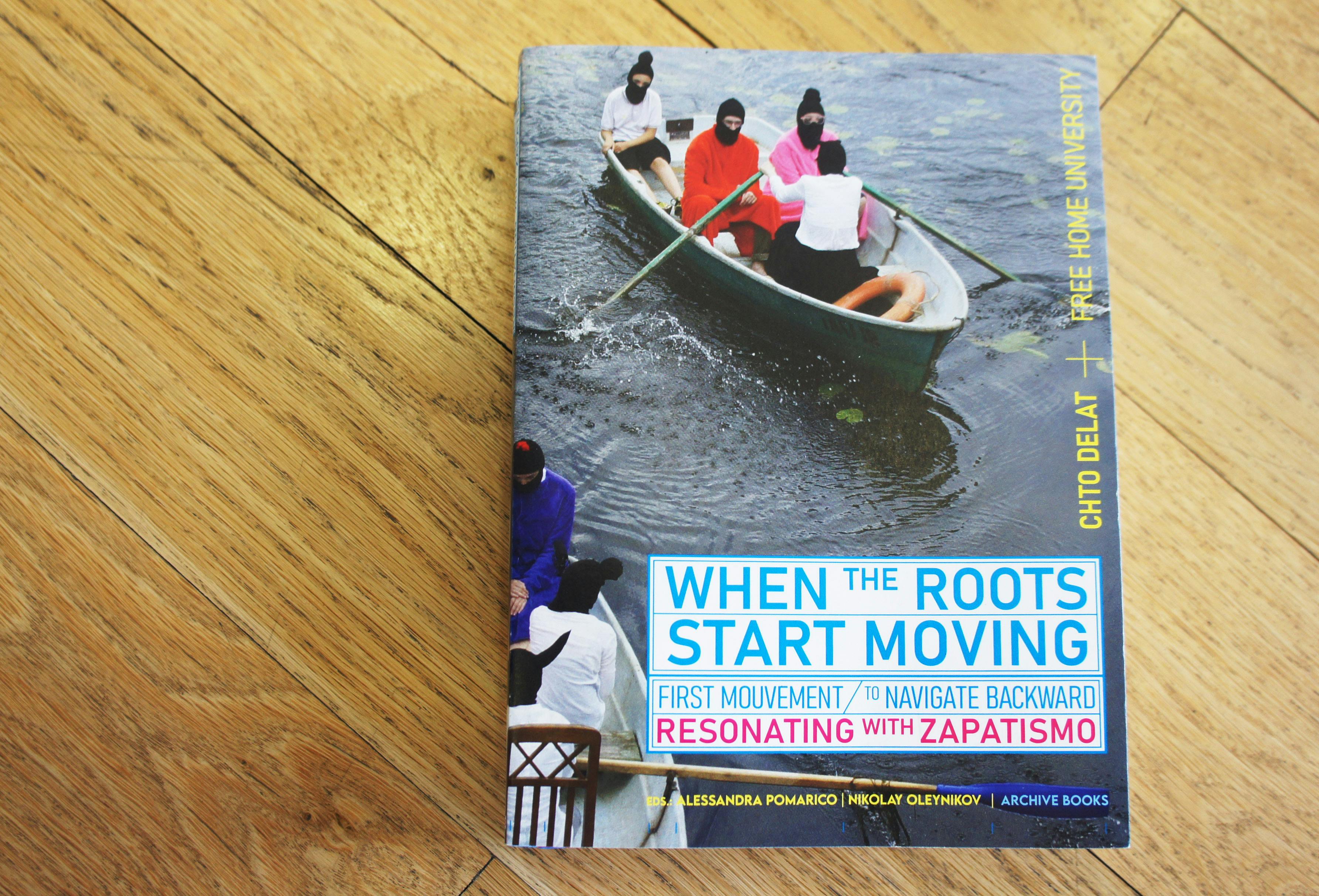 When the Roots Start Moving || First Mouvement: To Navigate Backward || Resonating with Zapatismo
When the Roots Start Moving || First Mouvement: To Navigate Backward || Resonating with Zapatismo Travel to Salento Zapatista || notes by Christian Peverieri
Travel to Salento Zapatista || notes by Christian Peverieri The Fate of an Insect... || essay by Silvia Maglioni & Graeme Thomson
The Fate of an Insect... || essay by Silvia Maglioni & Graeme Thomson